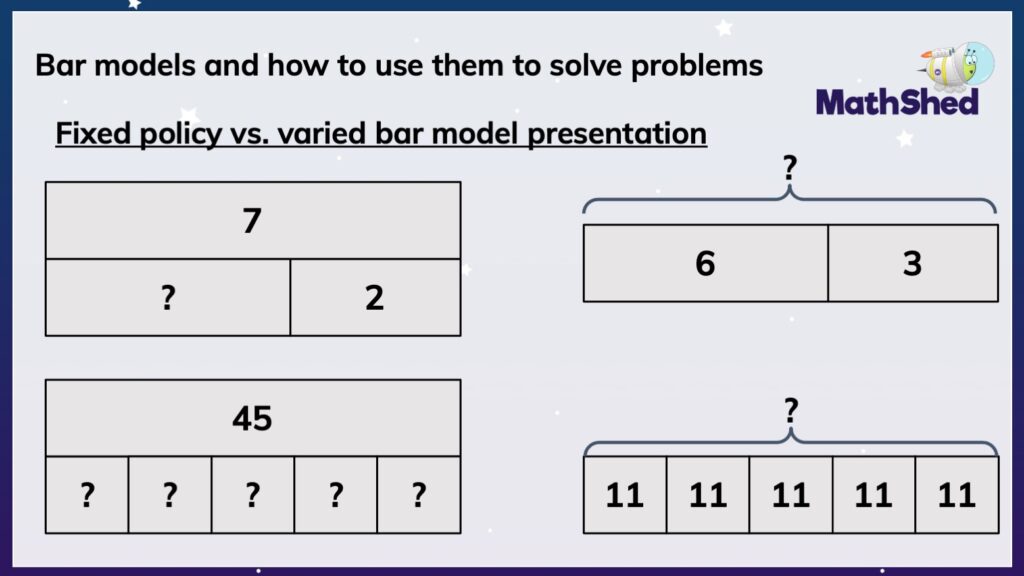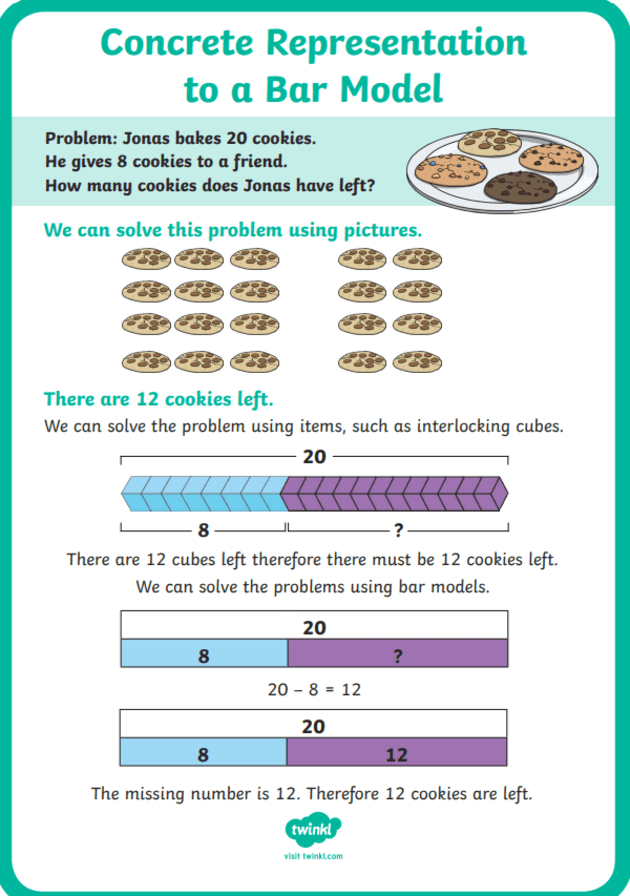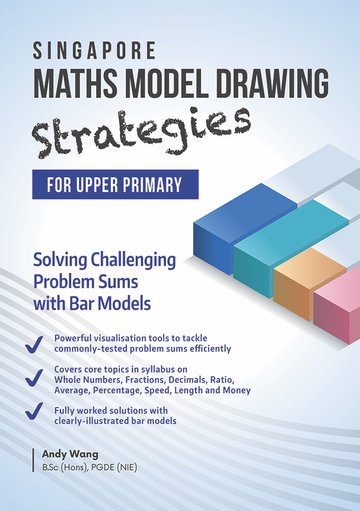Tips for introducing bar model drawing techniques to beginner learners
Wiki Article
Exploring Bar Design Drawing Techniques: A Comprehensive Overview to Picturing Math Concepts
Bar model attracting techniques work as an important resource for both teachers and pupils in picturing mathematical concepts. These models simplify complicated numerical relationships, aiding in the comprehension of enhancement, subtraction, department, and reproduction. This guide outlines reliable approaches for executing bar versions, fostering active involvement and real-world links. As viewers check out the useful applications and mentor tips, they will certainly discover exactly how these methods can change their approach to mathematics.Understanding the Fundamentals of Bar Design Illustration
Bar version attracting serves as a powerful visual device in maths, assisting in the understanding of numerical partnerships and problem-solving techniques. This technique entails standing for numbers and their partnerships via rectangular bars, making it simpler to envision operations such as addition, reproduction, department, and subtraction. Each bar's size represents a certain value, allowing students to contrast amounts and recognize proportions clearly.To produce a bar version, one begins by recognizing the trouble's key components, typically breaking it down into components that can be visually stood for. In a simple enhancement problem, 2 bars can be attracted, with their lengths standing for the addends. The combined length illustrates the amount. On top of that, bar models can be adjusted for much more intricate issues, consisting of ratios and portions, by readjusting benches as necessary. Mastering these basics lays a solid structure for reliable problem-solving and much deeper mathematical understanding.
Advantages of Utilizing Bar Versions in Mathematics
Utilizing bar designs in mathematics offers countless benefits that enhance knowing and understanding. These graphes aid pupils in grasping intricate ideas by breaking them down into convenient components. Bar designs offer a clear structure for highlighting partnerships in between numbers, making abstract ideas much more concrete. They advertise a deeper understanding of mathematical procedures and assist in problem-solving by allowing students to visualize the information they are dealing with.Bar designs support the development of essential thinking skills, as trainees need to analyze and translate the visual info to attract conclusions. This approach motivates active interaction with the product, enhancing retention and mastery of mathematical concepts. By fostering a strong structure in aesthetic literacy, bar versions equip students to come close to various mathematical obstacles with self-confidence. On the whole, the integration of bar models into maths education and learning confirms valuable in cultivating both understanding and analytical capacities among students.
Using Bar Designs to Enhancement and Reduction
Bar designs act as an efficient device for aesthetically representing enhancement and reduction troubles. By showing the relationship between numbers, they enhance understanding and help with analytical. On top of that, real-life applications of these versions can help learners understand mathematical concepts in sensible contexts.Representing Addition Visually
Aesthetic help can greatly improve their understanding of these operations when trainees experience enhancement and subtraction troubles. Bar designs offer as reliable tools for representing addition. By dividing a rectangle right into sectors that match to the numbers involved, students can imagine the partnership in between the amounts. If a trainee requires to add 3 and 5, they can develop a bar split into 2 sections: one section standing for 3 and the various other representing 5. This clear representation not only simplifies the enhancement process yet also reinforces the principle of incorporating quantities. As trainees control these aesthetic help, they create a much deeper understanding of addition, bring about enhanced analytical abilities and greater self-confidence in their mathematical abilities.
Subtraction With Bar Designs
Although subtraction is often regarded as a much more intricate operation than enhancement, bar versions can properly clarify this procedure for pupils. By aesthetically representing the quantities included, students can better understand exactly how numbers relate to one an additional. In a bar version for reduction, one bar stands for the overall, while an additional shows the amount being deducted. This aesthetic difference aids pupils grasp the principle of "taking away." For circumstances, if a bar shows 10 devices, and an additional bar standing for 4 units is eliminated, pupils can easily see that 6 devices remain. This technique not only cultivates understanding of subtraction but also help in establishing analytical skills, allowing students to envision their mathematical thinking and improve their general comprehension of mathematical principles.Real-Life Application Instances
Understanding subtraction with bar models lays a foundation for using these methods in real-life situations. In numerous contexts, such as budgeting or buying, individuals can visualize just how much money remains after costs. If an individual has $50 and spends $20, a bar version can stand for the overall amount and the spent part, highlighting that $30 is left. Additionally, moms and dads can utilize bar versions to help kids comprehend the amount of even more products require to be included in finish a collection, such as having three apples and requiring five. This aesthetic depiction streamlines complex troubles, facilitating understanding and retention. Inevitably, bar designs work as reliable tools in day-to-day decision-making, boosting mathematical understanding in useful scenarios.Envisioning Reproduction and Division With Bar Models
In discovering the application of bar versions for multiplication and division, it is necessary to realize their foundational concepts. Creating reproduction designs enables students to imagine relationships in between numbers, while efficient division strategies can be illustrated with these visual help. This approach boosts comprehension and analytical abilities in maths.Understanding Bar Models
Bar designs function as a powerful visual tool for highlighting the concepts of multiplication and division. They make it possible for learners to stand for mathematical relationships in an organized format, helping with a deeper understanding of these operations. In multiplication, bar versions present teams of equivalent size, enabling individuals to picture the overall amount when combining these groups. Alternatively, in department, bar models help portray how an overall is divided into smaller sized, equivalent parts, clarifying the principle of dividing. By employing these aesthetic help, trainees can realize the underlying concepts of multiplication and division better. This strategy not only boosts understanding however likewise sustains analytical skills, making bar models a vital property in mathematical education and learning.Building Multiplication Designs
Creating multiplication designs utilizing bar layouts provides a clear approach for picturing the process of reproduction. These models allow learners to stand for multiplication as teams of equivalent parts, making abstract principles more concrete. To show (3 times 4), a student can draw one bar split into three equal segments, each representing four devices. Additionally, developing a 2nd bar with the very same length enhances the understanding of repeated enhancement, as each segment matches to one group. This graph not only aids in comprehending multiplication but additionally boosts analytic skills. By using bar models, trainees can better comprehend relationships between numbers and establish a robust foundation for a lot more intricate mathematical concepts, resulting in enhanced self-confidence in their capacities.Visualizing Department Techniques

Resolving Word Troubles Utilizing Bar Design Techniques

For instance, in a problem entailing addition and subtraction, students can attract different bars for each quantity and after that manipulate them to discover the remedy. This procedure not only makes clear the problem yet additionally cultivates a much deeper theoretical understanding. In addition, bar models can be adapted for different kinds of word troubles, making them flexible throughout various mathematical subjects. Eventually, using bar models can considerably boost pupils' analytic skills by supplying a clear visual path to get here at the appropriate response.
Integrating Bar Designs in Various Math Topics
Bar models can be perfectly integrated right into different mathematics topics, improving trainees' understanding of principles beyond fundamental math. In algebra, these aesthetic tools help in standing for equations and inequalities, enabling learners to imagine relationships between variables. When tackling geometry, bar versions can highlight the properties of forms and spatial thinking, aiding trainees comprehend ideas like area and perimeter efficiently. In stats, bar versions facilitate the analysis of data sets, enabling trainees to compare quantities and identify trends aesthetically. Furthermore, incorporating bar models within measurement topics help in comprehending units and conversions by giving a substantial representation of amounts. By utilizing bar designs throughout different mathematical locations, instructors can cultivate a much deeper comprehension of complex principles, therefore improving analytic skills and advertising vital reasoning (bar model drawing techniques). This flexibility demonstrates the energy of bar models as a fundamental device for pupils in their mathematical tripTips for Mentor Bar Designs Effectively
Incorporating bar versions into training practices calls for thoughtful strategies to optimize their performance. Educators ought to begin by presenting bar designs with basic, relatable examples that students can click here quickly realize. This aids to construct self-confidence and familiarity with the principle. Gradually enhancing the intricacy of issues allows learners to apply their abilities progressively. In addition, educators ought to motivate students to produce their very own bar versions, advertising active interaction and possession of their learning.Including collaborative activities can likewise boost understanding, as pupils go over and solve troubles in groups. Continual comments is crucial; educators ought to supply useful discourse on students' bar model depictions to lead enhancement. Ultimately, connecting bar versions to real-life situations reinforces their importance, aiding students see the functional applications of their mathematical skills. By applying these strategies, educators can properly harness the power of bar models in their maths direction.
Frequently Asked Inquiries
Can Prevent Versions Be Used in Other Topics Besides Math?
Bar models can without a doubt be utilized in numerous subjects beyond mathematics. They efficiently show ideas in science, social researches, and language arts, aiding to aesthetically represent connections, processes, and ideas for enhanced understanding throughout techniques.What Age Is Finest Fit for Understanding Bar Models?
Bar models are best matched for youngsters ages 7 to 12, as they establish concrete reasoning abilities during this period (bar model drawing techniques). At this age, pupils can properly realize abstract concepts through graph and analytic techniquesAre There Digital Tools for Creating Bar Models?

Exactly How Can I Analyze Trainee Understanding of Bar Versions?
Evaluating student understanding of bar versions can involve tests, observational assessments, and team discussions. Educators may likewise evaluate pupils' completed versions and their ability to clarify their thinking, making certain a detailed assessment of understanding.What Are Common Mistakes When Using Bar Designs?
Typical mistakes when using bar versions include misstating quantities, failing to properly label bars, perplexing enhancement and subtraction, disregarding to use consistent scales, and neglecting the importance of clear visual splitting up between different elements.In enhancement, bar designs can be adapted for much more intricate problems, consisting of ratios and fractions, by adjusting the bars accordingly. Reduction is typically regarded as an extra complex operation than addition, bar models can efficiently clarify this process for students. In a bar design for subtraction, one bar stands for the total, while another shows the amount being subtracted. If a bar reveals 10 units, and an additional bar representing 4 units is eliminated, pupils can quickly see that 6 units stay. When splitting an overall into equal teams, trainees can attract a long bar to represent the entire and then sector it into smaller sized bars that show each team.
Report this wiki page